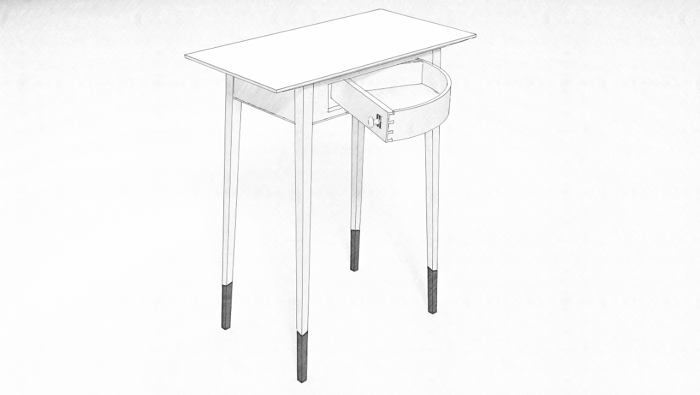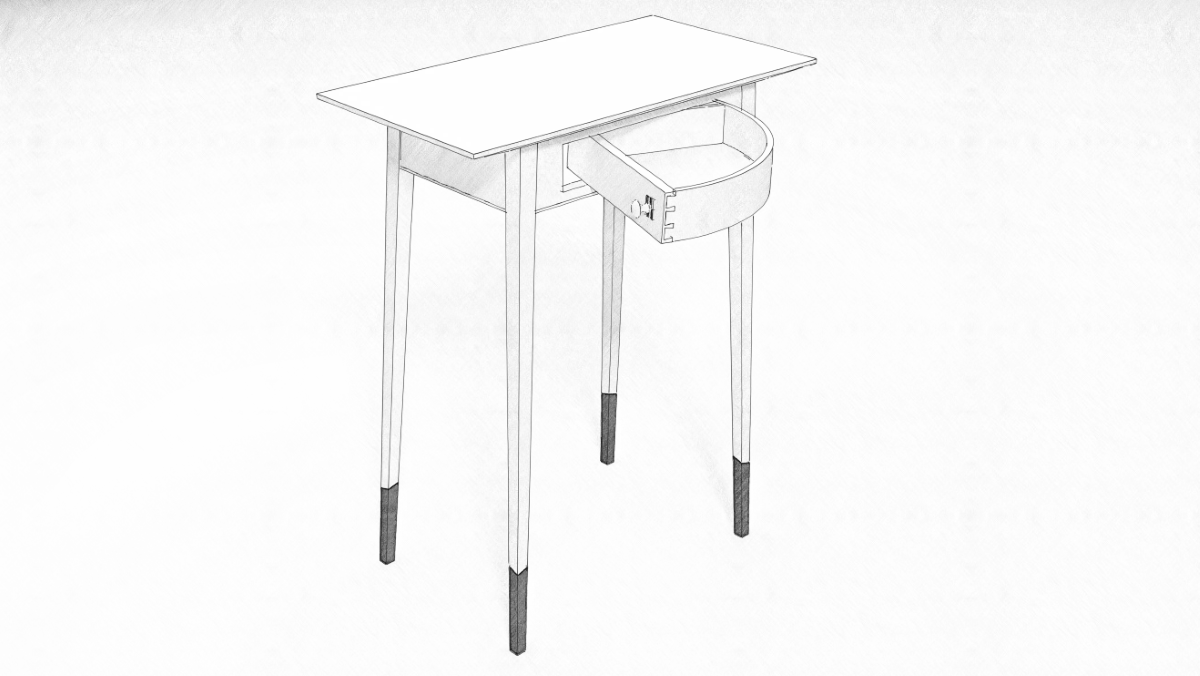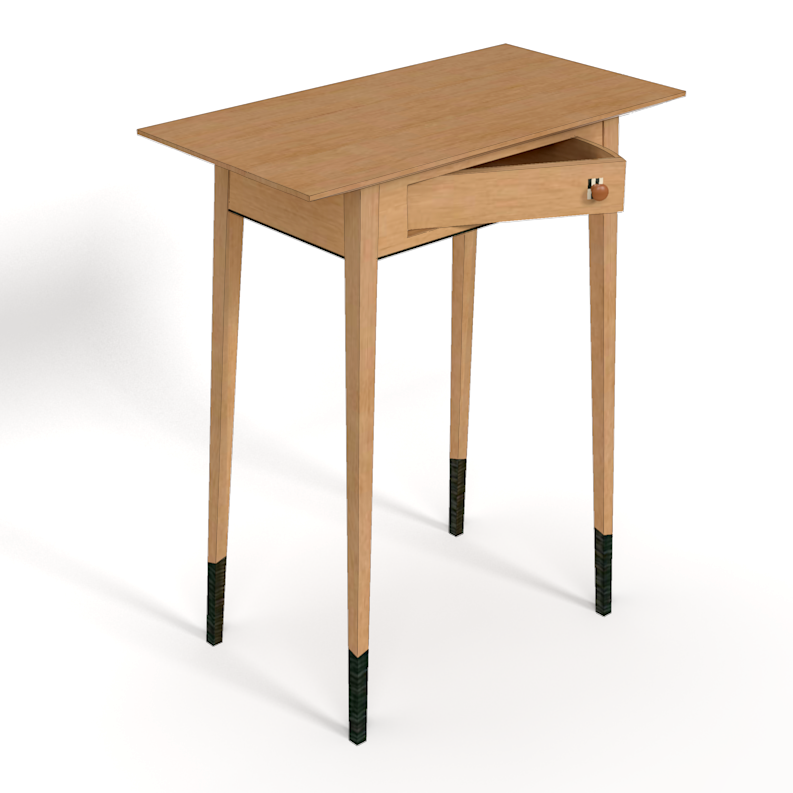
Back in June of last year I wrote a blog post about a handy extension called Rake and Splay. It makes it easy to correctly layout and draw table legs and other parts that will be angled such as the legs on this Elegant Side Table by Garrett Hack. The legs are angled both side to side and front to back.
Recently, reader Tom8021 asked about how to trim the legs off flat at the floor and at the top. In the following video, I show the method I use. In this case I am make flat horizontal cuts but the same basic process could be used to make more complicated cuts such as doming the end of a square ebony plug or creating the pommel transition between a turned leg and the square top portion. Essentially, you create a cutting surface–a cutting plane in this example–and intersect it with the geometry in the part getting cut. Since the leg is already a component, the cutting planes are added into the component. After the intersection is created and the waste, part of the cutting plane becomes the end of the leg.
I also demonstrate adding a tenon to the end of the apron and for that, I used Vector Push/Pull from Fredo6’s Joint Push/Pull extension.
If you use Rake and Splay and haven’t installed it recently, you should get the updated version which was released on February 2nd of this year.
–Dave

























Comments
Thanks I'll try to use cutting planes more often. Seems much easier than adding lines to the leg and more accurate. I am trying to do that in the shop as well. make it longer and cut to size.
Does the Joint /pushpull use the current plane, which might be angled, to create an extension? I tried to put a dowel coming out of the top of the splayed leg and it would come out vertical only.
Thanks again
Tom, I'm glad that helped. If only you could hold the legs at the right angle and cut them the same way in the shop...
If you want the dowel to be parallel to the center line of the leg, you might consider locating it before trimming the leg. If the top face of the leg before trimming has the proper orientation, you could draw a circle for the dowel on the end of the component while it is not open for editing. Then edit the component to cut it and then use Push/Pull (the native Push/Pull will work fine) to extrude the dowel.
Vector Push/Pull could be used if you've drawn the circle on the horizontal face but the resulting dowel would be elliptical instead of round. Sort of like those cheap dowels you might get at the local big box. ;)
-Dave
Thanks for another excellent video Dave.
Just wondering, how would you recommend making the side apron. ?
I have a model similar to what you show in the video except my legs are spaced equi-distant apart. I selected the front apron and tried doing a copy rotate of that component but each of the various ways I tried never has the apron line-up between the legs on the side. Perhaps copy rotate is not possible and the only choice is to draw a separate side apron component.
Are the rake and splayed angles the same for the legs? If so, you should be able to identify the center of the table at the top of the legs with a couple of diagonal guidelines and then use Rotate/Copy to copy the apron around to the other locations.
Dave,
Thanks for your reply. I found an error in how I drew my guidelines and after redrawing now all is well with apron copies.
Perfect!
Log in or create an account to post a comment.
Sign up Log in